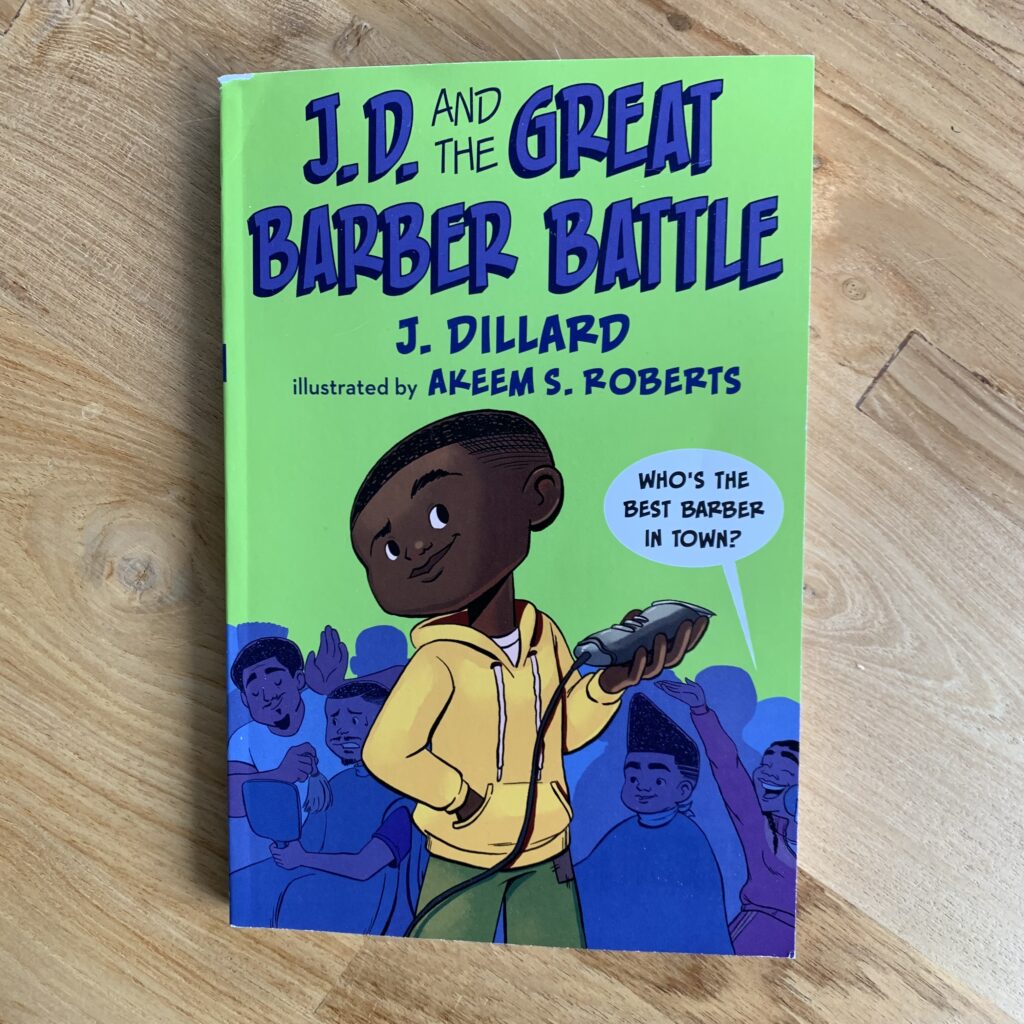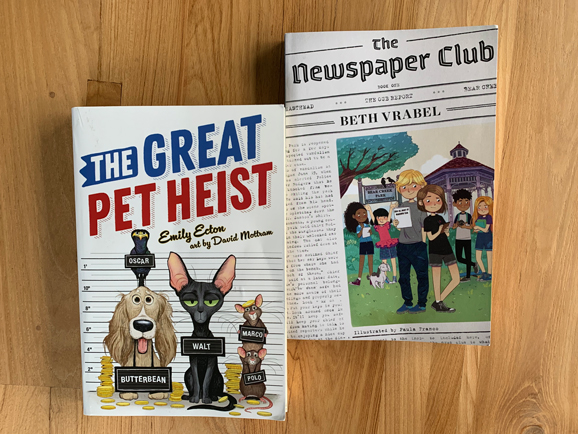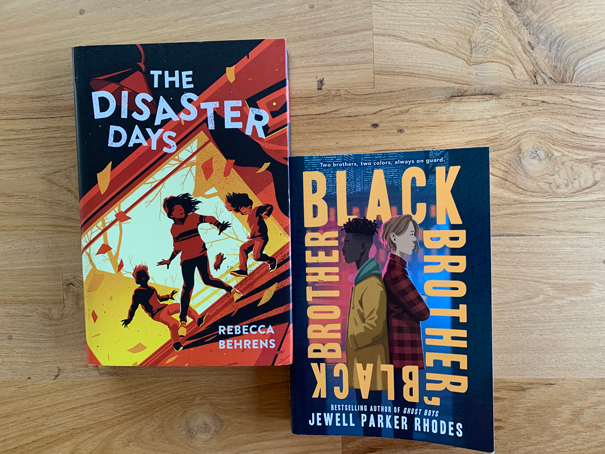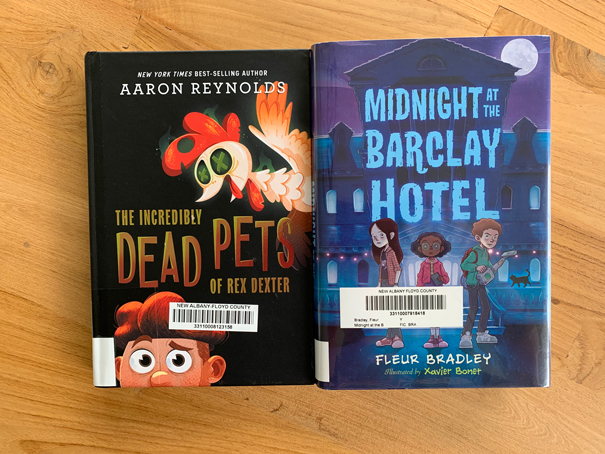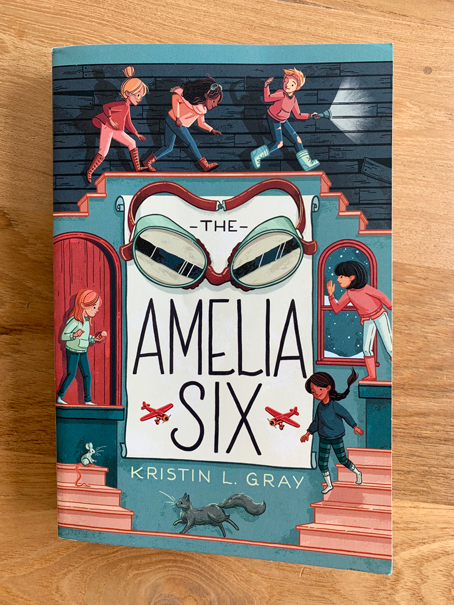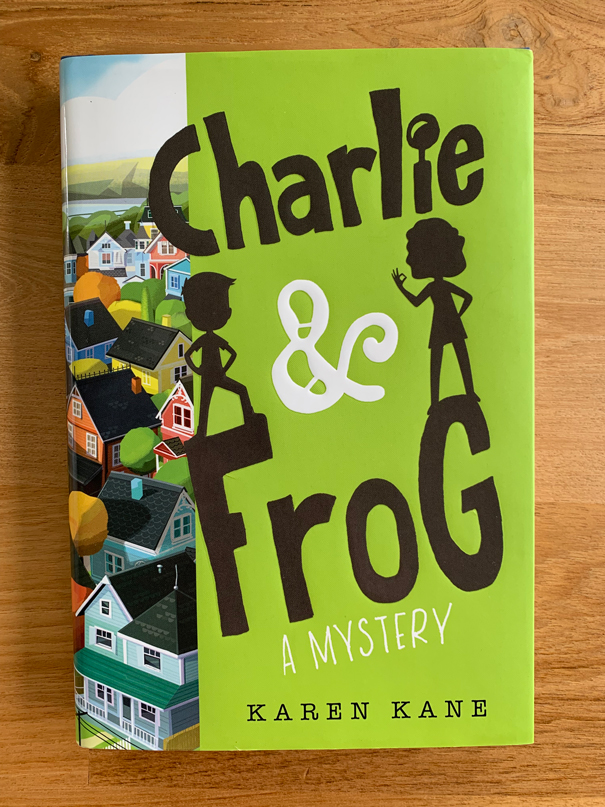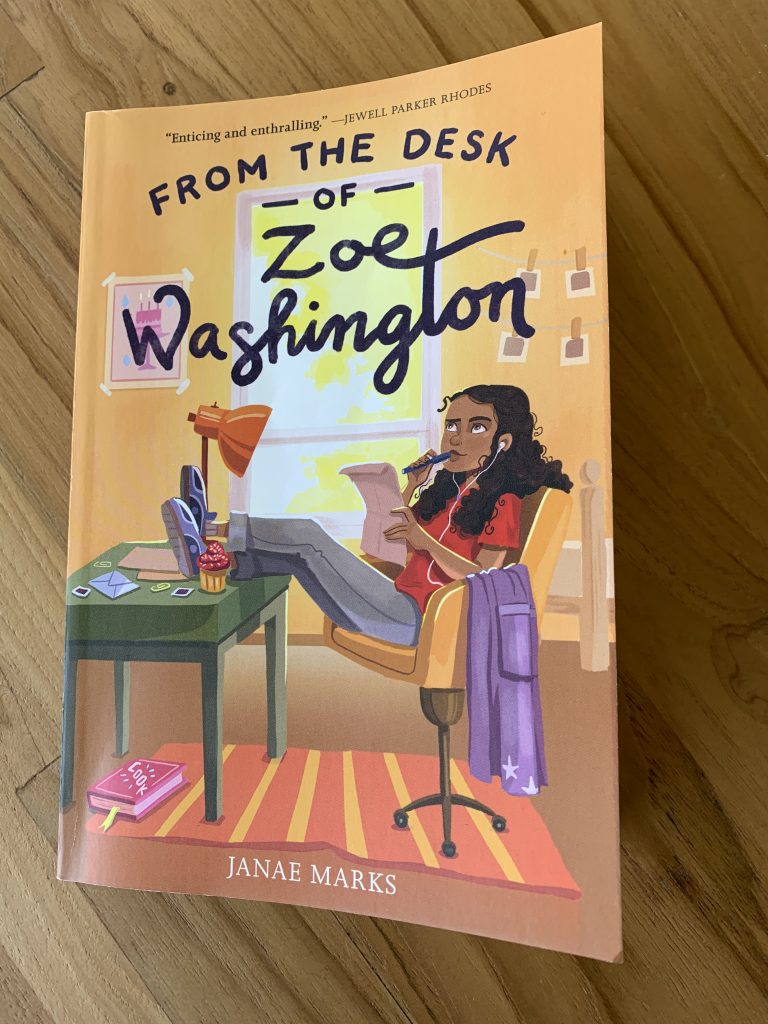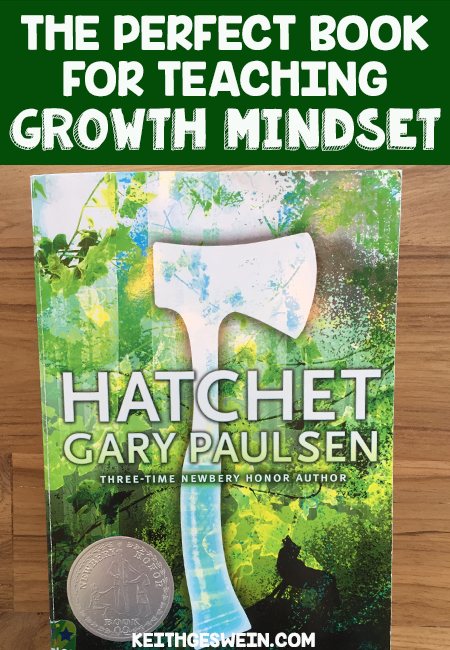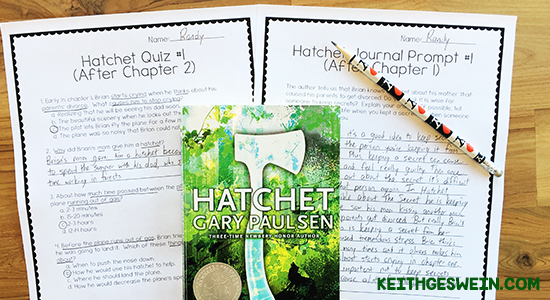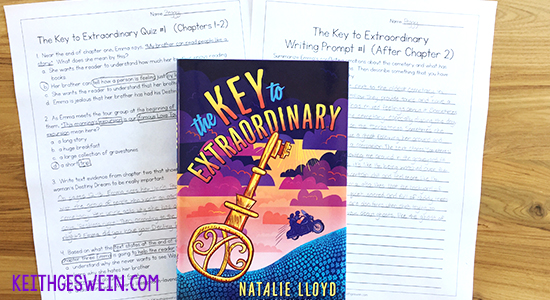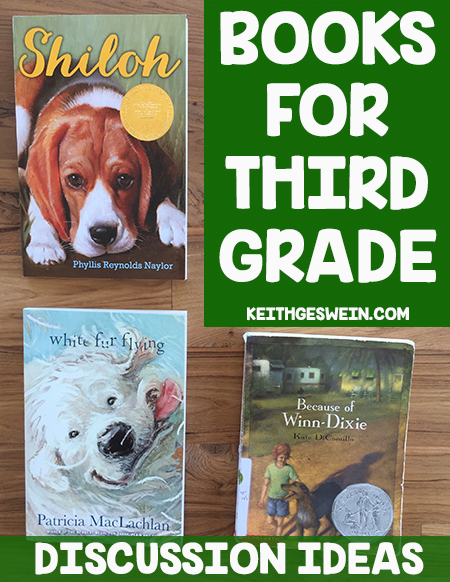
I taught third grade for nine years and it seemed that every one of my students loved reading books that involved animals! All of the stories pictured include main characters who change because of a dog in the story. These main characters also have to make difficult decisions based on their love for their dog. There are also tons of great discussions you can have with your students as they read these books, so I’ve provided five ideas for each book.
Because of Winn-Dixie, by Kate DiCamillo (AR level 3.9)
Plot: The main character, Opal, has just moved to a new town and is lonely. Her mother left when she was young, her dad is always busy as a preacher, and she is having a hard time making new friends. But her life improves as soon as she brings home a stray dog, which she names Winn-Dixie. Opal makes several new friends of all different ages and backgrounds as a direct result of things she is doing to take care of her new dog.
Third graders will enjoy this book because Opal loves talking about everything that’s on her mind when she’s around Winn-Dixie because she feels like the dog listens to her. Many other characters fall in love with Winn-Dixie as the book progresses, which helps Opal make new friends. Winn-Dixie seems to have a knack for gravitating toward nice people. This helps Opal become friends with an older woman whom other kids call a “witch” and a man who people stay away from because he has been arrested. Thanks to Winn-Dixie, kids learn why we shouldn’t judge people.
Discussion or writing topics:
–Which of Opal’s friends do you feel are the most unlikeliest friends she made? Why do you feel this way about these two characters? How did Winn-Dixie help Opal become friends with these two people?
–Why does Opal feel closer with her dad at the end of the book? What three events do you think had the biggest impact on this?
–Would you like to have a dog like Winn-Dixie? Explain why or why not.
–Why do you think Stevie, Dunlap, and Amanda started acting nicer to Opal at the end of the book?
–If Littmus Lozenges were real, do you think lots of people should eat them or not? Explain why you feel this way.
I’ve created quizzes, writing prompts, vocabulary activities, cloze passages, and character-analysis pages to help you teach this awesome book. Click the image to see this product in my TpT store.
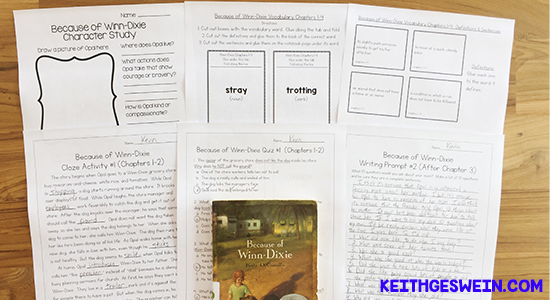
Shiloh, by Phyllis Reynolds Naylor (AR level 4.4)
Plot: The main character is a boy named Marty who tries to keep a dog (Shiloh) away from an owner who abuses the dog. Marty has always wanted a dog, but his parents say they can’t afford to take care of one. But when Marty realizes that Shiloh’s owner abuses him, he does everything he can to keep the dog away from this owner. Marty’s family lives in a rural area, so he finds places to hide Shiloh from his family while keeping him away from the owner (Judd). He sneaks food from dinner and gives it to Shiloh. Marty feels terrible that he lies to his parents, but he justifies it because he is keeping Shiloh away from a terrible owner.
Third graders will enjoy this book because it shows a young boy going to extreme lengths to keep a dog safe. Marty bravely stands up to Judd by telling him that the way he’s treating Shiloh is wrong. The author also describes how Shiloh acts happier around Marty. At the end, Marty agrees to do odd jobs for Judd in exchange for letting him keep Shiloh. Marty’s parents are still nervous about affording this dog, but warm up to him because he brings so much joy to their family.
Discussion topics:
–Would you lie to your parents to keep a dog safe? Why or why not?
–How would the story have been different if Marty had immediately told his parents that he was keeping Shiloh at their house to keep him away from Judd?
–At the end of the story, why do Marty’s parents feel better about keeping Shiloh, even though they’re not earning any extra money? Is there something in your life you think is this valuable, even if it’s really expensive to keep?
–Reflect on all the things Marty did to keep Shiloh safe throughout the story. What would you have done differently to keep Shiloh safe? What do you think is one thing Marty did that was a really good idea?
–After reading this story, what have you learned about why it’s challenging to stand up for what’s right?
I have created writing prompts and quizzes for each chapter of Shiloh. Click the image below to see more!
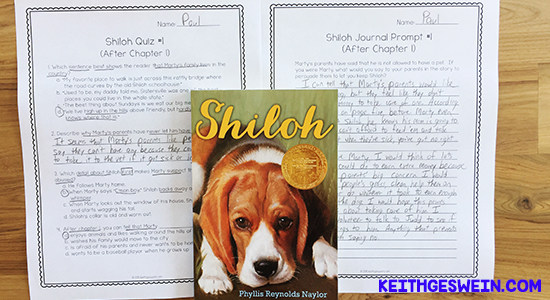
White Fur Flying, by Patricia MacLachlan (AR level 3.1)
Plot: The main character is a girl named Zoe whose family often keeps animals who need help. A family moves in across the street with a mother who hates dogs and a young boy who does not speak. As Zoe gets to know this young boy, she learns he doesn’t speak because he blames himself for some family problems. But Zoe learns this boy also loves dogs. The story ends with people doing brave things, the young boy talking, and the woman changing her feelings about dogs. Zoe’s pets contribute to all of these events.
Third graders will enjoy this book because the young boy, Phillip, has a lot of troubling thoughts on his mind. It seems like he will never speak. But once he starts interacting with Zoe’s dogs, he opens up a bit — not by his words, but with his actions. Zoe’s family are experts with animals and show a lot of love and care to all animals. Her dad is a vet and her mom rescues dogs who need a home. There are lots of examples of Zoe and her family treating animals extremely kindly and respectfully. But it’s the care that one of their dogs shows to Phillip in a dangerous situation that causes this young boy to open up for good.
Discussion topics:
–How did Zoe’s dogs have such a tremendous impact on the way Phillip’s behavior changed? Do you think it’s possible for an animal to have a huge impact on people in real life like that?
–What do you think is the biggest reason why Phillip started talking? Explain why you think this.
–Near the end of the story, Phillip calls Jack (Zoe’s dog) a hero. Do you agree with Phillip? Why or why not? How would you define the word “hero?”
–Have you ever known someone like Phillip who doesn’t say much? What would you do to help someone who is really shy?
–Describe what Zoe’s house is normally like. Would you like to live in a home like that? Why or why not?
These are some quizzes and writing prompts I’ve created for this book. Click to see this product in my TpT store, where you can download a preview.

